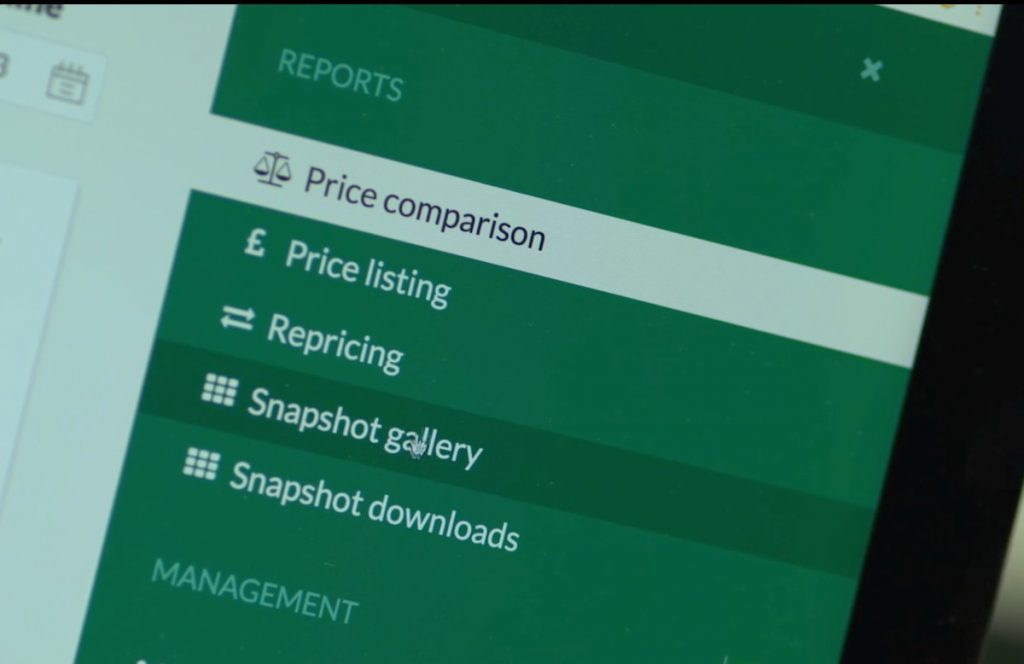
Keyword research is something that every business or website owner needs to consider. From organic results to PPC advertising, there’s no avoiding it. When potential customers are looking for your products or services online, they will rarely be typing your company’s name into the search bar . Instead, they’ll be using generic keywords, like your industry or the type of product they’re looking to buy.
On a typical Google results page, organic and PPC results will be the most prominent. Other types of results, like local listing types, images, and featured snippets might also appear – but we’ll focus on the two main ones for now.
So, where do you rank? Here’s how to do keyword research for an SEO strategy that will help you rank at the top of Google’s organic results, and how to pick the right keywords for your PPC campaign no matter your budget.
How can a small business rank in Google results?
Let’s say you run a small e-commerce site. If you’re not as well-known as Amazon or ASOS, there’s little chance that people will be typing your shop’s name into Google to get to your website. Instead, your best chance of being found is when potential customers look for the products you’re selling.
Picking the right keywords
Keywords are the most important tool to harness in order to get noticed in search results, whether that’s organically or through paid advertising. Start by making a list of the keywords you’d like your website to rank for – if you’re selling holiday packages in Europe, for example, these might start with broad terms like ‘Europe holidays’ and go as specific as ‘cheap all-inclusive Barcelona city break’. Respectively named short and long-tail keywords, these each have their own advantages and drawbacks.
Short-tail keywords are by definition shorter (3 words or less), and broader than their long-tail counterparts. They’re great to get a lot of traffic to your site, since users won’t be looking for anything too specific. However, this also means you’ll have a lower conversion rate – short-tail keywords tend to be associated with earlier stages of the buyer’s journey, where people aren’t quite ready to purchase just yet.
Another issue with short-tail keywords is the competition. It’s almost impossible for small to medium businesses to rank high for those, because of the amount of other companies with much bigger budgets for PPC, more employees working on their SEO, more domain authority and/or a higher quality score. Instead, you might want to focus on more specific keywords with a lower search volume – you might get less traffic than you’d like, but it should be of higher quality.
That’s where long-tail keywords come into play. They’re – you guessed it – long, and they’re focused. While you may not get as much traffic, due to their much lower search volume, your conversion rates will improve thanks to the fact users will be looking to purchase a specific item. Even if they don’t buy on their first visit, customers are more likely to visit your site again in the future when they’re ready to make the purchase.
Long-tail keywords are also cheaper to bid on for paid search results and have lower competition, which makes them the best choice for most small businesses. But that’s not all you can do to help your website be found in search results…
The power of proximity in organic results
According to Whitespark’s Darren Shaw, “proximity to searcher is the new #1 ranking factor in local search results today.” That’s a pretty bold claim, and yet there’s a lot of truth to it. While this may not apply to every small business out there – not everything is relevant to proximity – every independent brick-and-mortar business should know how to harness the power of local results.
Local organic results often appear in the form of a map with three different listings under it, and these appear depending on how close to a user’s location they are. Even without a website or a verified Google listing! (However, it is best practice to submit your business to Google My Business.) Does this mean your business has no chance of ranking for users outside of a certain radius?
Yes and no. The map also includes paid ads, which can be shown to users even if they’re not near your location. So if you’re desperate to show up on the map, it could be a good way to do it. But if your budget is smaller, you could also implement some of these SEO tips – you may not get to the top each time, but they should improve your rank.
Keyword research for organic results
So, we’ve established how important keywords are if you’d like to rank in the first few pages of Google’s organic results – and that’s why keyword research should be the first step of anyone’s SEO strategy. There’s plenty of tools out there designed to help you with your research and planning, and we’ve measured some of them against each other:
Google Keyword Planner
Google’s own keyword research tool, found within AdWords, should be where you begin. While it’s meant to be used when planning a PPC campaign, you can also use it for organic keyword research by looking at search volume, traffic forecast, keyword ideas and spying on your competition.
You could also give Google itself – as in, the search engine – a try: having a look at the autocomplete suggestions that pop up when you type in some keywords related to your website could give you an idea of the long-tail keywords you might want to go for. If you don’t have the budget for AdWords, this is an easy, free solution!
SEMrush
Probably one of the most well-known tools out there, SEMrush is a one-stop platform designed to help you at all stages of your organic SEO and paid advertising research, and has the advantage of not only focusing on Google – it also offers information on keyword performance in Bing. Who even uses Bing, you may ask? The search engine is often laughed at, but it still owns 10% of the UK market share – so don’t underestimate it; your customers could be hiding there.
A useful feature of organic research is the competitor site analysis SEMrush offers, where you can find out which keywords your competitors are using for their organic SEO content. Using SEMrush’s paid service, you’ll also be able to find out all the keywords for which your competitors are ranking in the top 20 results, traffic percentage per keyword, position in the results per keyword, and more.
Keyword Tool
An easy, free to use (up to 750 keyword suggestions) alternative to Google Keyword Planner, Keyword Tool allows you to generate long-tail keyword suggestions for single keywords you enter. It uses Google’s autocomplete feature to suggest long-tail keywords, based on the searches performed by users on Google.
On-page SEO best practices
If you’re trying to rank organically, you need to pay special attention to content. There’s a reason everyone is always telling you that ‘content is king’. Your on-page SEO needs to include keywords while remaining user-friendly.
The main thing to keep in mind when writing content is: does it add value? Content needs to be valuable and desirable to readers – search engine optimisation is meant to help search engines find it and understand its value. Optimising terrible content or stuffing a page full of keywords used to work five or ten years ago, but Google has got smarter. It’s employing AI to detect if you’re using dodgy back links or spamming users with keywords, and you won’t rank using these practices. Many organisations who used to rely on spammy content and dodgy back-linking have since been penalised, and are struggling to rank again in Google.
Have a look at Google’s SEO recommendations to find out what best practices you should follow.
PPC advertising and negative keywords
PPC advertising can be a little difficult to get into for smaller companies, especially those who might not have a lot of money to spend on it. Picking the right keywords to bid on depending on your budget is vital – but how do you go about it?
First, you need to do some keyword research and pick the keywords you’d like to bid on. The same best practices apply as when you’re doing research for organic SEO. For example, long-tail keywords may be the better choice if your budget is limited, and use the tools mentioned above to find out which keywords your competitors aren’t using, so you can take advantage of it. Once you’ve got a list of the keywords you want to use, you can decide on a budget.
If your budget is limited, a fantastic tool to use is negative keywords, which will stop your ads appearing to users who search for certain keywords. This eliminates irrelevant traffic and ensures your ads are targeting the right people – people who are searching specifically for what you’re selling. For example, if you’re selling holiday packages that don’t include travel, you might want to use ‘flights’ or ‘train tickets’ as negative keywords, so users looking for travel to their holiday destination won’t find your website and be disappointed when they can’t purchase what they’re looking from.
When using negative keywords, remember to add synonyms, singular and plural versions, and close variations on the term if you really want them all to be excluded. With the irrelevant traffic blocked, you’ll lower your bounce rate and gain a higher conversion rate – without having to pay for super-competitive keywords!
Taking the time to perform keyword research before you start your SEO or PPC strategy will guarantee better results, more conversions and less money spent – so there’s really no reason not to get started. Get in touch with our PPC and SEO experts if you’d like more information.



